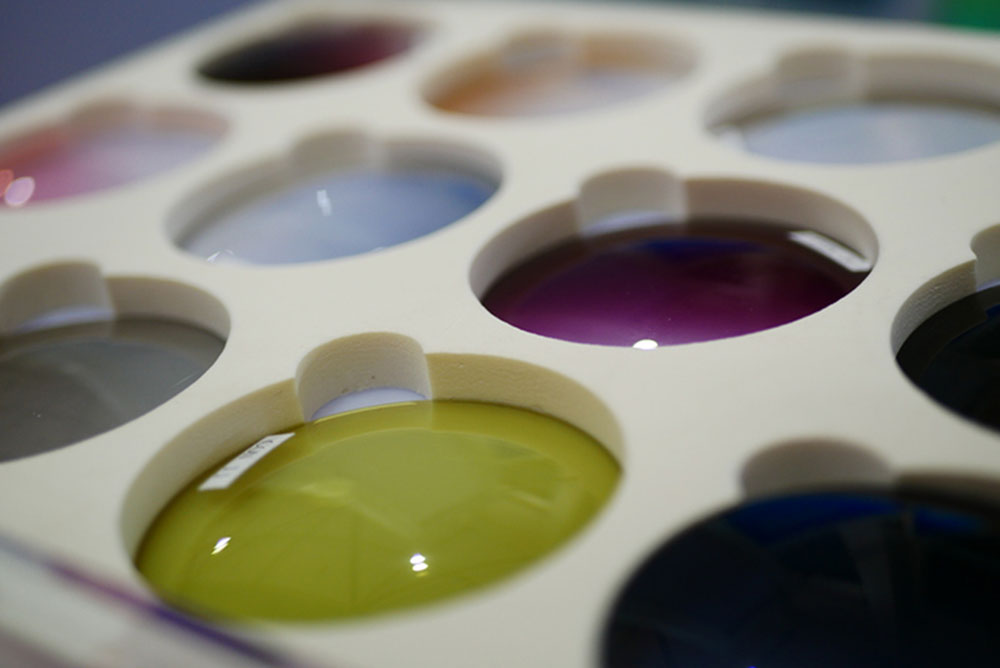
TINTED EYEGLASSES, in the past used mostly outdoors, are becoming more popular for everyday wear indoors—although the same pair is unlikely to work well for every occasion.
——
WHILE EYEGLASS tints can reduce glare and the amount of light entering the eyes, they are generally not the best remedy for the separate problem of digital eye strain (DES), according to Mountain View, California, ophthalmologist Rahul Khurana, clinical spokesperson for the American Academy of Ophthalmology.
——
“It’s not the blue light that’s making your eyes feel bad after a day of staring at the computer—it’s staring at a screen for hours without breaks,” Dr. Khurana told New York Magazine. For DES, the best relief is the age-old 20-20-20 formula: every 20 minutes, shift focus onto something at least 20 feet away for at least 20 seconds. Artificial tears to lubricate dry eyes can also help.
——
On the other hand, because blue light scatters the most easily, it makes the eyes work harder to focus, and recent research shows that blue light from digital screens may add to eye strain. Also, because blue light penetrates to the retina in the back of the eye, the long-term added exposure from digital screens may over time contribute to macular degeneration.
——
But it’s because clear lenses allow in the most blue light from both sunshine and indoor lighting that they are the best option for seeing well indoors. In addition, because blue light suppresses melatonin, it boosts attention, reaction time and mood —helping to counter depression in winter months, hence its use in “light therapy” —and to create healthy circadian rhythms.
——
Clear glass provides the highest percentage of visible light transmitted (VLT) at 86% to 96% —while VLT for the darkest, densest tints that provide the best outdoor protection is 20% to 40%.
——
Tints with VLT lower than 50% worn regularly indoors can “pose a significant risk” because the eyes adapt to the darker view, making subsequent light exposure feel brighter and sometimes painful.
——
VLT is dependent on tint color, lens thickness and material, and the number of coatings applied. For sun protection, tint density should be at least 75%—and UV absorption 100%—though tints offer little protection from glare in most light conditions. In sunglasses, gray and brown tints create the least distortion in color perception.
——
For an indoor/outdoor compromise, 50% to 60% VLT can make eyes more comfortable and improve accurate color perception, although both effects can take days or weeks. The advice is to try out different tint colors and densities when buying glasses even though simulating a variety of real-light situations in one indoor location would be challenging.
——
To reduce strain during long hours of digital screen use, yellow-tinted lenses can increase contrast but block only ultraviolet light. Orange tints eliminate close to 100% of blue light, making them the best “blue-blockers” for late-evening screen activity, notably the $10 UVEX glasses used in most research.
——
In studies at the University of Toledo, those subjects using digital screens during the three hours before bedtime who wore glasses tinted amber (between yellow and orange) reported “better sleep” as well as improved mood, compared with those using yellow tints.
——
Blue-blockers can also protect those with strong light sensitivities, such as to fluorescent lighting—in particular, those suffering chronic migraine. Yellow and orange tints, while blocking blue light, can paradoxically brighten overcast, hazy, low-light conditions, as well as heighten contrast for athletic activities like skiing and cycling.
——
While the idea of rose-colored glasses sounds appealing, they can make eyes look red and tired. Rose and red can also cause significant color imbalances, but these tints heighten contrast in both cloudy and sunny conditions and are often the best choice for fishing. And green tints heighten contrast but preserve color balance for sports like golf. (See this chart on tinted lenses.)
——
Fishermen are also the best candidates for polarized lenses, which help deal with glare, although they can make it impossible to read digital screens as well as car dashboard lights. For the multi-sport aficionado, some sport sunglass frames have interchangeable lenses.
——
In addition to altering eyewear, “reduced-blue” LEDs can be easier on the eyes than LEDs with cool, white light. Blue-light filters for digital screens can help block blue light without reducing visibility, and the “night shift” setting on some devices can alter display colors to the warmer end of the color spectrum.
——
I usually sleep plenty of hours but plan to try UVEX blue-blockers when working on screens after dinner to see about improving sleep quality. On the other hand, I might worry what to do before naps—on trains and planes, and sometimes in the afternoons.
—Mary Carpenter
Every Tuesday, well-being editor Mary Carpenter reports on health news you can use.
